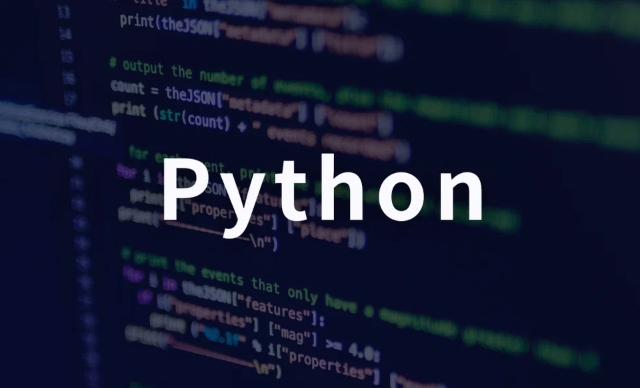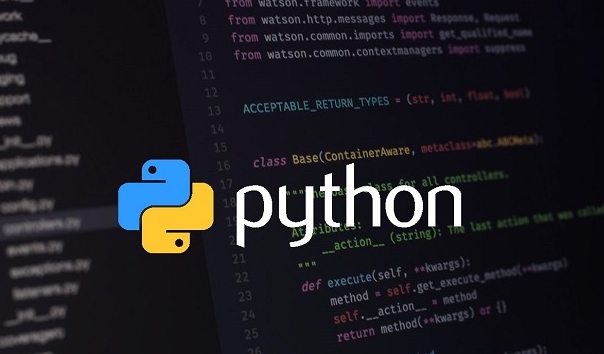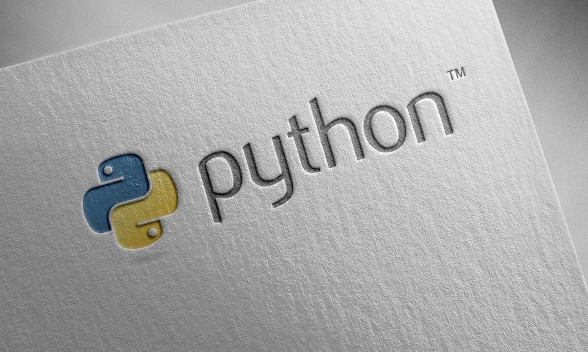The methods of debugging Python code mainly include: 1. Use pdb for command line debugging; 2. Use the graphical debugging function of the IDE; 3. Record logs through the logging module; 4. Use third-party debugging tools. pdb is a debugger built into Python. You can insert pdb.set_trace() into the code or start it through the command line to perform single-step execution, view variables, etc.; IDEs such as PyCharm and VS Code provide graphical interface debugging functions such as breakpoints and monitoring expressions, which are suitable for complex logic problems; the logging module can replace print output, support multi-level control and diversified output targets, which are convenient for log management at different stages; third-party tools such as ipdb, Py-Spy, and cProfile enhance the interactive experience and performance analysis capabilities, and can be flexibly selected according to specific needs. Mastering these methods can help to efficiently locate and solve problems.

Debugging Python code is an inevitable part of the development process, especially after the project complexity increases, it is difficult to quickly locate problems by relying on print output alone. Fortunately, there are many practical debugging tools and methods in the Python ecosystem that can help you find out where the bug is more efficient.

Use pdb: Python's own debugger
pdb is a debugging tool in the Python standard library. It is very convenient to use and does not require additional installation. You just need to insert import pdb; pdb.set_trace() into the code, and the program will be paused when it runs here and enters interactive debugging mode.

In this mode, you can:
- View the current variable value
- Step-by-step (using n)
- Jump into the function (using s)
- View the call stack (using w)
Although inserting set_trace() when writing code is the most direct way, debugging can also be enabled through command line startup, such as python -m pdb script.py , which is more suitable for debugging at the entire script level.

Utilize the graphical debugging function of the IDE
For many people, debugging with the IDE graphical interface will be more intuitive. PyCharm and VS Code all provide complete debugging support.
Taking VS Code as an example, after configuring the launch.json file, you can break points in the code, view variables, execute them in a single step, and even do advanced operations such as conditional breakpoints and monitoring expressions.
These features are particularly suitable for dealing with complex logical errors or state dependencies. If you are working in a team collaboration environment, the debugging capabilities of the IDE are also easier to share and reproduce problems.
Logging: A more reliable way than print
Sometimes we want to understand the overall process of the program running, but we don’t want to interrupt the execution process. The logging module comes in handy at this time.
Compared with print, logging can set different log levels (debug, info, warning, error, critical), and can flexibly control the output format and target (console, file, remote server, etc.).
A common practice is:
- Set the development stage to DEBUG level, output detailed information
- Switch to INFO or WARNING after going online to avoid excessive logs affecting performance
For example:
import logging logging.basicConfig(level=logging.DEBUG) logging.debug('This is a debugging message')
This will not only retain debugging information, but will not mess up the output.
Third-party debugging tools: the choice of enhanced capabilities
In addition to built-in tools, there are also some third-party libraries that can help you debug better. for example:
- ipdb : Combined with IPython, it provides a more friendly debugging experience, supports automatic completion and syntax highlighting
- Py-Spy : used to analyze performance bottlenecks of Python programs, suitable for troubleshooting CPU and memory problems
- vspyder : Visual debugging plug-in, suitable for data display in specific scenarios
These tools can be selected and used according to specific needs. For example, if you want to see how much time a certain function takes, it is very appropriate to use cProfile snakeviz.
Basically these commonly used methods. Different tool combinations can be selected in different situations. The key is to master the basic ideas: observe the state, narrow the scope, and verify the hypothesis.
The above is the detailed content of Debugging Python Code Effectively with Tools. For more information, please follow other related articles on the PHP Chinese website!

Hot AI Tools

Undress AI Tool
Undress images for free

Undresser.AI Undress
AI-powered app for creating realistic nude photos

AI Clothes Remover
Online AI tool for removing clothes from photos.

Clothoff.io
AI clothes remover

Video Face Swap
Swap faces in any video effortlessly with our completely free AI face swap tool!

Hot Article

Hot Tools

Notepad++7.3.1
Easy-to-use and free code editor

SublimeText3 Chinese version
Chinese version, very easy to use

Zend Studio 13.0.1
Powerful PHP integrated development environment

Dreamweaver CS6
Visual web development tools

SublimeText3 Mac version
God-level code editing software (SublimeText3)

Hot Topics
 What are some common security vulnerabilities in Python web applications (e.g., XSS, SQL injection) and how can they be mitigated?
Jun 10, 2025 am 12:13 AM
What are some common security vulnerabilities in Python web applications (e.g., XSS, SQL injection) and how can they be mitigated?
Jun 10, 2025 am 12:13 AM
Web application security needs to be paid attention to. Common vulnerabilities on Python websites include XSS, SQL injection, CSRF and file upload risks. For XSS, the template engine should be used to automatically escape, filter rich text HTML and set CSP policies; to prevent SQL injection, parameterized query or ORM framework, and verify user input; to prevent CSRF, CSRFTToken mechanism must be enabled and sensitive operations must be confirmed twice; file upload vulnerabilities must be used to restrict types, rename files, and prohibit execution permissions. Following the norms and using mature tools can effectively reduce risks, and safety needs continuous attention and testing.
 How does Python's unittest or pytest framework facilitate automated testing?
Jun 19, 2025 am 01:10 AM
How does Python's unittest or pytest framework facilitate automated testing?
Jun 19, 2025 am 01:10 AM
Python's unittest and pytest are two widely used testing frameworks that simplify the writing, organizing and running of automated tests. 1. Both support automatic discovery of test cases and provide a clear test structure: unittest defines tests by inheriting the TestCase class and starting with test\_; pytest is more concise, just need a function starting with test\_. 2. They all have built-in assertion support: unittest provides assertEqual, assertTrue and other methods, while pytest uses an enhanced assert statement to automatically display the failure details. 3. All have mechanisms for handling test preparation and cleaning: un
 How does Python handle mutable default arguments in functions, and why can this be problematic?
Jun 14, 2025 am 12:27 AM
How does Python handle mutable default arguments in functions, and why can this be problematic?
Jun 14, 2025 am 12:27 AM
Python's default parameters are only initialized once when defined. If mutable objects (such as lists or dictionaries) are used as default parameters, unexpected behavior may be caused. For example, when using an empty list as the default parameter, multiple calls to the function will reuse the same list instead of generating a new list each time. Problems caused by this behavior include: 1. Unexpected sharing of data between function calls; 2. The results of subsequent calls are affected by previous calls, increasing the difficulty of debugging; 3. It causes logical errors and is difficult to detect; 4. It is easy to confuse both novice and experienced developers. To avoid problems, the best practice is to set the default value to None and create a new object inside the function, such as using my_list=None instead of my_list=[] and initially in the function
 What are the considerations for deploying Python applications to production environments?
Jun 10, 2025 am 12:14 AM
What are the considerations for deploying Python applications to production environments?
Jun 10, 2025 am 12:14 AM
Deploying Python applications to production environments requires attention to stability, security and maintenance. First, use Gunicorn or uWSGI to replace the development server to support concurrent processing; second, cooperate with Nginx as a reverse proxy to improve performance; third, configure the number of processes according to the number of CPU cores to optimize resources; fourth, use a virtual environment to isolate dependencies and freeze versions to ensure consistency; fifth, enable detailed logs, integrate monitoring systems, and set up alarm mechanisms to facilitate operation and maintenance; sixth, avoid root permissions to run applications, close debugging information, and configure HTTPS to ensure security; finally, automatic deployment is achieved through CI/CD tools to reduce human errors.
 How can Python be integrated with other languages or systems in a microservices architecture?
Jun 14, 2025 am 12:25 AM
How can Python be integrated with other languages or systems in a microservices architecture?
Jun 14, 2025 am 12:25 AM
Python works well with other languages ??and systems in microservice architecture, the key is how each service runs independently and communicates effectively. 1. Using standard APIs and communication protocols (such as HTTP, REST, gRPC), Python builds APIs through frameworks such as Flask and FastAPI, and uses requests or httpx to call other language services; 2. Using message brokers (such as Kafka, RabbitMQ, Redis) to realize asynchronous communication, Python services can publish messages for other language consumers to process, improving system decoupling, scalability and fault tolerance; 3. Expand or embed other language runtimes (such as Jython) through C/C to achieve implementation
 How can Python be used for data analysis and manipulation with libraries like NumPy and Pandas?
Jun 19, 2025 am 01:04 AM
How can Python be used for data analysis and manipulation with libraries like NumPy and Pandas?
Jun 19, 2025 am 01:04 AM
PythonisidealfordataanalysisduetoNumPyandPandas.1)NumPyexcelsatnumericalcomputationswithfast,multi-dimensionalarraysandvectorizedoperationslikenp.sqrt().2)PandashandlesstructureddatawithSeriesandDataFrames,supportingtaskslikeloading,cleaning,filterin
 How can you implement custom iterators in Python using __iter__ and __next__?
Jun 19, 2025 am 01:12 AM
How can you implement custom iterators in Python using __iter__ and __next__?
Jun 19, 2025 am 01:12 AM
To implement a custom iterator, you need to define the __iter__ and __next__ methods in the class. ① The __iter__ method returns the iterator object itself, usually self, to be compatible with iterative environments such as for loops; ② The __next__ method controls the value of each iteration, returns the next element in the sequence, and when there are no more items, StopIteration exception should be thrown; ③ The status must be tracked correctly and the termination conditions must be set to avoid infinite loops; ④ Complex logic such as file line filtering, and pay attention to resource cleaning and memory management; ⑤ For simple logic, you can consider using the generator function yield instead, but you need to choose a suitable method based on the specific scenario.
 How do list, dictionary, and set comprehensions improve code readability and conciseness in Python?
Jun 14, 2025 am 12:31 AM
How do list, dictionary, and set comprehensions improve code readability and conciseness in Python?
Jun 14, 2025 am 12:31 AM
Python's list, dictionary and collection derivation improves code readability and writing efficiency through concise syntax. They are suitable for simplifying iteration and conversion operations, such as replacing multi-line loops with single-line code to implement element transformation or filtering. 1. List comprehensions such as [x2forxinrange(10)] can directly generate square sequences; 2. Dictionary comprehensions such as {x:x2forxinrange(5)} clearly express key-value mapping; 3. Conditional filtering such as [xforxinnumbersifx%2==0] makes the filtering logic more intuitive; 4. Complex conditions can also be embedded, such as combining multi-condition filtering or ternary expressions; but excessive nesting or side-effect operations should be avoided to avoid reducing maintainability. The rational use of derivation can reduce






